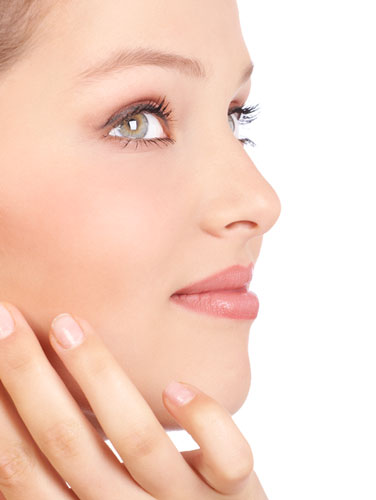 While the injection of botulinum toxin is the number one non-surgical cosmetic treatment according to the American Society for Aesthetic Plastic Surgery, the fifth most popular non-surgical cosmetic procedure is the injection of hyaluronic acid.
While the injection of botulinum toxin is the number one non-surgical cosmetic treatment according to the American Society for Aesthetic Plastic Surgery, the fifth most popular non-surgical cosmetic procedure is the injection of hyaluronic acid.
Hyaluronic acid dermal fillers provide fullness to areas of the face and hands that have lost volume due to subcutaneous fat loss. They also fill in fine lines or deep wrinkles. Hyaluronic acid dermal fillers have gained popularity since they do not cause a loss in muscle control like botulinum toxin injections. They are also reasonably long lasting without being permanent.
There are a number of dermal fillers containing hyaluronic acid that are available on the market. Brand names of hyaluronic acid include Restylane, Juvaderm, Captique, and Prevelle. Hylaform and Hylaform Plus, though, were the first hyaluronic acid fillers available for use in the United States.
Almost all hyaluronic acid dermal fillers are produced through the fermentation of specially engineered bacteria, but Hylaform and Hylaform Plus are different. These agents are made from the combs of roosters in which the hyaluronic acid has been extracted and purified. The hyaluronic acid is cross-linked with a compound called divinyl sulfone in its preparation. The amount cross-linking achieved in this process is about 20%. This cross-linking is believed to slow down the body’s ability to break down the material thus making it last longer in the skin.
The major difference between Hylaform and Hylaform Plus are the size of the individual particles that are injected. Hylaform is composed of 500 micron particles (half a millimeter across) while the particle size in Hylaform Plus is 750 microns. Because of the larger particle size, Hylaform Plus is used to fill deeper wrinkles and crevices since it provides more volume than Hylaform.
Does the source of the hyaluronic acid, animal versus bacteria, matter? In many respects, the answer is no. Hyaluronic acid is the same structure across all species, from human to bird to bug. The source of the hyaluronic acid does not mean it is safer than the bacteria-derived source. In fact, if people are allergic to eggs or other bird products, the use of Hylaform and Hylaform Plus are discouraged, even though the chance of allergic reaction is remote.
Also Hylaform and Hylaform Plus do not necessarily last longer than other dermal fillers. These products only last about 3-4 months after injection. Some other products with different cross-linked substances last longer. For example, Restylane is cross-linked with a substance called BDDA and lasts 6 to 9 months.
There are some benefits and limitations to hyaluronic acid injections in general. If the cosmetic effect of the filler injection does not turn out as intended or if there is skin reaction, the benefit of using hyaluronic acid is that there is an “antidote,” an enzyme that can be injected into the skin that digests the hyaluronic acid. It is not clear whether Hylaform and Hylaform Plus are more or less amenable to digestion from hyaluronidase (the enzyme antidote).
One complaint among most early dermal fillers, including Hylaform and Hylaform Plus is that the injections do not contain a local anesthetic like lidocaine. This means that they can be uncomfortable on injection. This is something to bear in mind when choosing between hyaluronic acid dermal fillers.
While Hylaform and Hylaform Plus were very useful in their time, newer products may now be superior. Advantages of other products over the Hylaform family include an even lower potential for allergic response, longer duration of effect, and newer products (like Puragen Plus) contain the local anesthetic lidocaine.
References
Gold MH. Use of hyaluronic acid fillers for the treatment of the aging face. Clin Interv Aging 2007;2:369-376.
